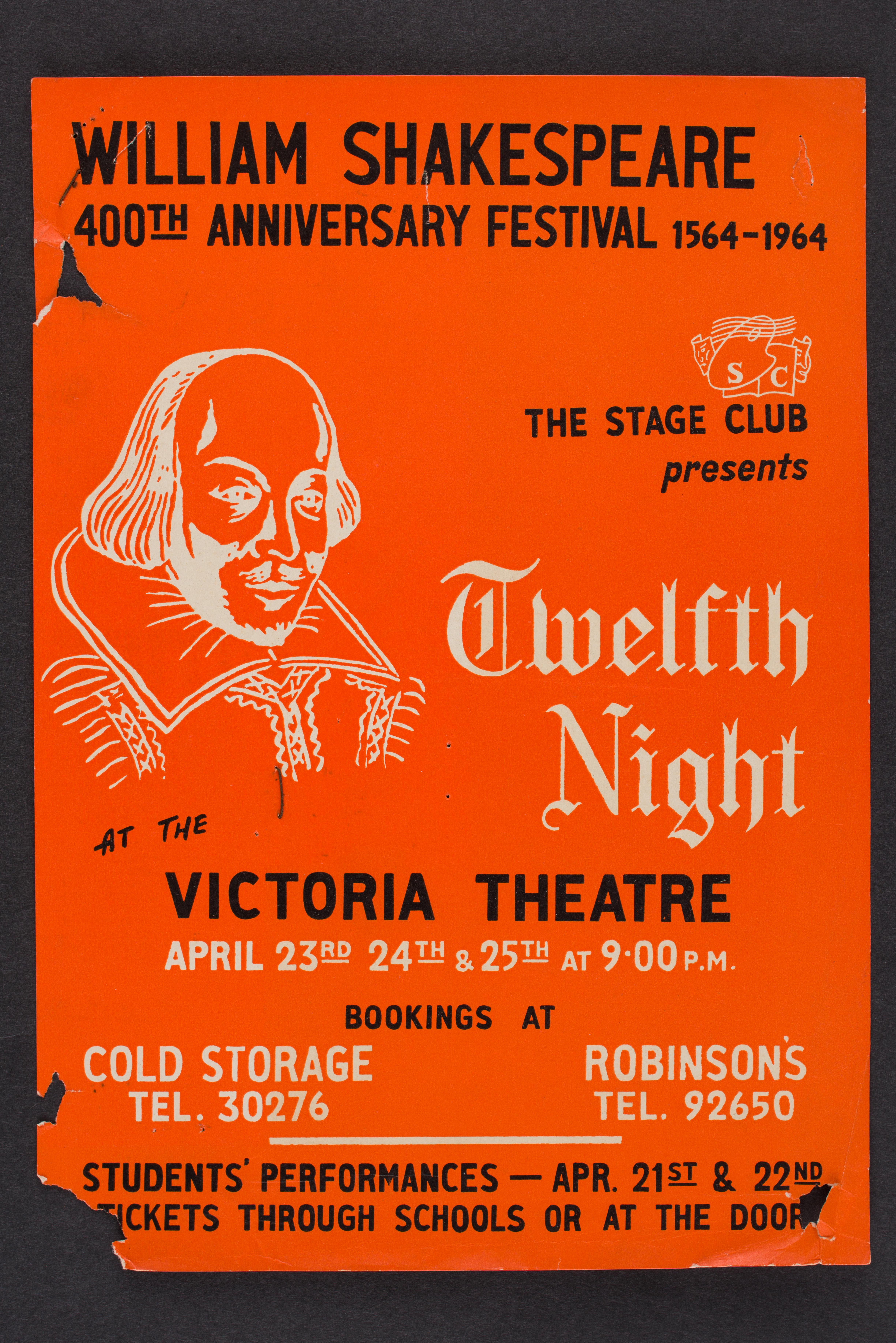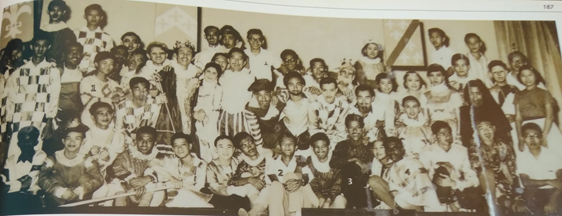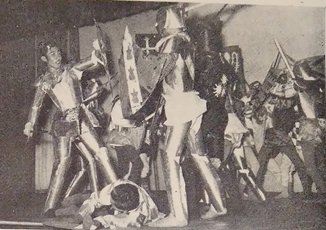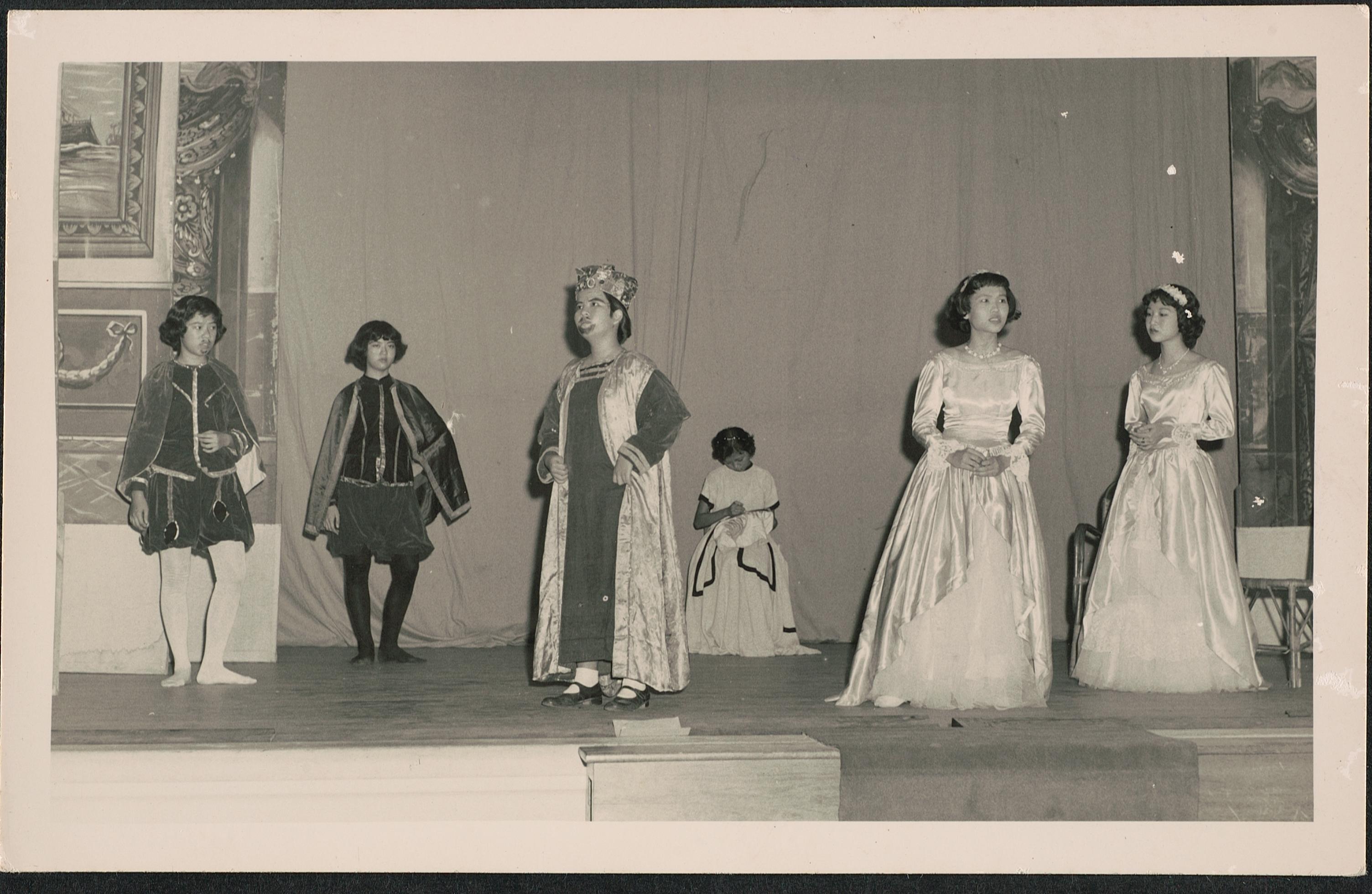Performing Shakespeare in 20th-Century Singapore Schools

Poster for the Stage Club’s production of Twelfth Night (Singapore, 1964). Collection of the Peranakan Museum. Gift of the Stage Club. Accession no. 2015-02145.
Introduction
For much of the twentieth century, students in Singapore had only limited opportunities to watch Shakespeare performances. Amateur theatrical groups such as the Stage Club would sometimes perform Shakespeare. As can be observed from this poster from the Stage Club’s 1964 production of Twelfth Night, mounted to celebrate the 400th anniversary of Shakespeare’s birth, the Club made it a point to put on “students’ performances”.
Students could also sometimes watch professional touring productions, although such opportunities could be limited. In 1945, when the British armed forces arranged for a performance of Hamlet starring Sir John Gielgud, only twenty local undergraduates were allowed to attend – as ushers.
Therefore, many schools sought to mount their own Shakespeare productions, particularly in the 1950s, when the English education system was expanding rapidly.
The Raffles Players and Other School Troupes
One particularly enthusiastic student group was the Raffles Players, which consisted of students from Raffles Institution and Raffles Girls’ School. From the early 1950s onwards, the group put on a Shakespeare play almost annually, and various pioneers participated in these productions during their school days.
This photograph, for instance, shows a 1958 production of Henry V by the Raffles Players. Among them are two of Singapore’s early pioneers. The individual fourth from the right in the front row is S. Jayakumar, who would go on to become Singapore’s Deputy Prime Minister. The individual third from the right in the back row (holding the flag) is Stella Kon (or Lim Sing Po, as she was known in school), who would later become a pioneer playwright, well-known for her monodrama, Emily of Emerald Hill, which has been performed internationally since 1985.
These productions were large-scale affairs. By the 1970s, each Rafflesian production had a cast and crew of ‘200 to 300’ (Rafflesian 46:1, p.80). School productions were often also quite high-profile and regularly attracted attention in the press, with the students even being featured on the national radio or television at times. Katong Convent’s rendition of Twelfth Night, for instance, was broadcast on national television in 1975.

The cast of Henry V (1958), performed by the Raffles Players. Image taken from My Grandfather’s Class: Raffles Institution Yearbook 1965 (Singapore, 2016), p.187. Image credit: Raffles Institution, Singapore.

The Raffles Players perform Henry V (The Rafflesian 32:1, May 1958, photographic plate inserted between pp.32-3). Image credit: Raffles Institution, Singapore.
Students and teachers often went to considerable lengths to re-construct the historical era the plays were set in. This photo of the Raffles Players’ 1958 production of Henry V shows the actors wearing medieval-style armour. The school magazines reported that school manufactured ‘some thirty suits of armour’ out of aluminum for this play (Rafflesian 32:2, p.78; Rafflesian 32:1, p.32).
While we do not know which play the students in this 1959 photograph were acting, we can see that the male characters were dressed in the doublets and hose popular in Shakespeare’s time.
Yet these performances were not always about local schools straightforwardly replicating Western culture.
Click on the video below to find out more about how students in 20th century Singapore gave Shakespeare a unique local flavour.

Photograph of a school play (1959). Courtesy of the National Museum of Singapore, National Heritage Board. Accession no. XXXX-14078.
Transcript of Video
